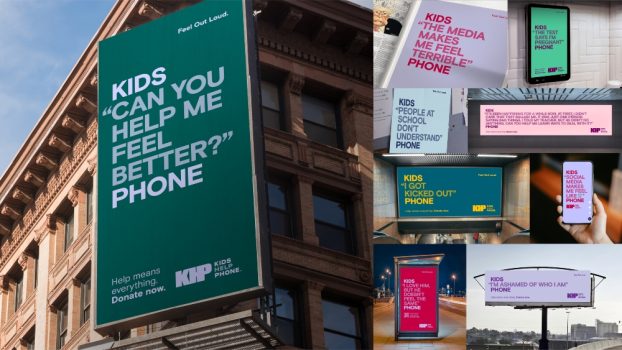In the face of PVR fast-forwarding and audience fragmentation, content creation – dare we say “advertainment” – is blurring that ever-thinning line between ads and entertainment. Today, well-informed consumers filter out marketing messages before their brains even have the opportunity to internalize the meaning. This is where content creation, when done well, can make an audience all eyes and ears. As it turns out, brand-spun programming has the potential to be a big game-changer
for many brands, especially for those still clinging to the “Hey! Look at me!” style of marketing that’s been pounded into our collective psyche over the past century.
In recent years, Canada has seen a plethora of new content integration ideas that are less about the brand and more about the audience’s passion points, such as TD Canada Trust’s “Up Close and Comfortable” vignettes, featuring behind-the-scenes interviews with creatives from top TV shows (like American Idol) sitting in the famous TD green chair, arranged by media agency Starcom MediaVest Group.
There has also been lots of themed online and print content coming from brands, such as Dove’s “Waking up Hannah” – choose-your-own-adventure-style webisodes about a day in the life of an urban 20-something – promoting its Go Fresh line of products (created by Ogilvy & Mather in Toronto and the Barbarian Group). And more recently, Cadillac, with Cossette Media, promoted the CTS Coupe in Quebec with a French “Nouveau Classiques” lifestyle section on Askmen.com, featuring food, fashion and entertainment fitting with the Cadillac image. It also produced exclusive content on that site and for various other publications.
We’re also seeing more in-show integrations, such as Mattel’s partnership with MTV for its Apples to Apples board game, which had MTV Live hosts playing the game on air, arranged by media agency Carat.
Television viewers, especially young ones with the attention spans of guppies, are increasingly particular about how to divide their media pie.
As Kathleen O’Hara, brand manager, entertainment and games, Mattel Canada, puts it, “Toys and games are so heavily advertised, especially
from October to December, that we were pursuing something that would allow us to speak to consumers a bit differently than we would with just running a TV spot.”
Content creation strategies have the inherent ability to be controlled to fill a very particular need, whether it be attracting the distracted youth segment, or reviving a well-recognized brand and making it relevant again.
Enter Swiss Chalet’s Rotisserie Channel. It launched at the end of February, running for three months, and featured one thing – roasting chickens – 24 hours a day, seven days a week. The only other element included on the channel was a promotional code featuring a different deal every day, which drove viewers to the Swiss Chalet Facebook page.
“I immediately said ‘I love it’. The only thing we needed to figure out was whether we could ensure that our guests could engage with it,” says Mark Daprato, VP marketing, Swiss Chalet.
The idea stemmed from BBDO Toronto’s concept for the Swiss Chalet television spots that depicted an employee fantasizing about a 24/7 chicken channel. “We needed to get people to really fall in love with what our product was again,” says Daprato.
The concept was test-driven with Swiss Chalet’s Facebook group. “We wanted to get some honest feedback from people, and not to think that this was nuts.” says Daprato.
It was far from nuts, as Daprato explains that Swiss Chalet’s Facebook fans enthusiastically gravitated towards the idea. The chicken channel was launched simultaneously on Rogers digital television and Swisschalet.com.
The attention that the Rotisserie Chanel accrued didn’t merely comprise Facebook and Twitter results. “The PR story speaks for itself,” says Daprato. “Obviously this [channel] is breakthrough and we figured we’d probably get some attention. So there’s a core media component to it as well.”
The substantial PR coverage, which included attention from nearly every major media outlet across the country, and Swiss Chalet’s rapid increase in Facebook appreciation by 30,000 fans, was exactly what the brand was hoping for.
Daprato suggests that this was a game-changer for Swiss Chalet. “It opened our eyes to the possibilities, to understand different ways we think about going to market.”
Daprato feels alternative advertising methods are a necessity to get people to take notice. “People are becoming far more sophisticated in their expectation of what we are saying to them, some sort of content strategy is obviously going to be very important.”
Mattel has been especially active in creating content to grab consumer attention. Aside from the Apples to Apples partnership with MTV, it recently executed Ken’s resurgence with the one-man competition to become Barbie’s beau again. On Valentine’s Day 2004, Barbie and Ken broke up, and a collective gasp echoed around the globe as women, young and old, grieved for a celebrity relationship that began back in 1961 on the set of a television commercial. Following seven years of swinging bachelorhood, Ken decided over the 2010 holiday season that Barbie was indeed the doll of his dreams.
“We wanted to give visibility to Ken and his desire to win Barbie back after all these years of being apart. And what better way to do it than to bring him to life?” says Adriana Gut, marketing manager, girls, Mattel. As she explains, Mattel moved the conversation occurring between Barbie and her fans (currently two million on Facebook) towards a dialogue with Ken. Via Facebook and Twitter he became his own personal advocate in the fight to win the doll back, asking for dating advice from fans in the process.
The most recent segment of the campaign featured out-of-home, print ads and a series of gossip-style interviews between Ken and CTV eTalk’s Ben Mulroney. To bring Ken out of the virtual sphere of social media and into the real world, the eTalk series involved stop-motion photography that allowed Ken’s interviews to mimic a real-life celebrity exposé. 
With Transcontinental, Mattel also developed a six-page fashion spread in Elle Canada’s April 2011 issue. “It was a means to highlight Barbie and Ken’s reunion, and also their journey as the ‘it’ couple,” says Gut.
Five Canadian designers, including Joe Fresh and Greta Constantine, designed outfits for Barbie and Ken as they had various rendezvous across Canada. Then, leveraging Barbie’s partnership with LG Fashion Week, Mattel allowed fashionistas the chance to “pick a date” with Ken by employing live Ken models who donned the same outfits Ken had worn in the Elle Canada spread.
“It was a great photo op, and a great opportunity to entertain Barbie fans,” explains Gut. “The idea was that everyone needs a Ken. [Barbie] found hers, so she gave fans a chance to pick their perfect date with Ken.”
While breaking through the clutter was the primary motivation behind the upsurge in original content creation – a traditional 30-second spot, even when executed with flair, can still be ignored – there’s also a better chance that these more elaborate and entertaining efforts will garner priceless word-of-mouth and valuable free press along the way.
“Canadians are viewing media differently. They watch TV with their smartphones beside them and their laptop or tablet in their lap,” says Mattel’s O’Hara.
As the audience – especially the youth segment – evolves its habits to suit a morphing mediascape, more marketers will be forced out onto that limb of creative marketing. “As consumers change the way that they view media, and certainly with the increase in PVRs, we have to get more creative in the way that we reach our target market,” she says. Like Ken did to win back his gal pal.























